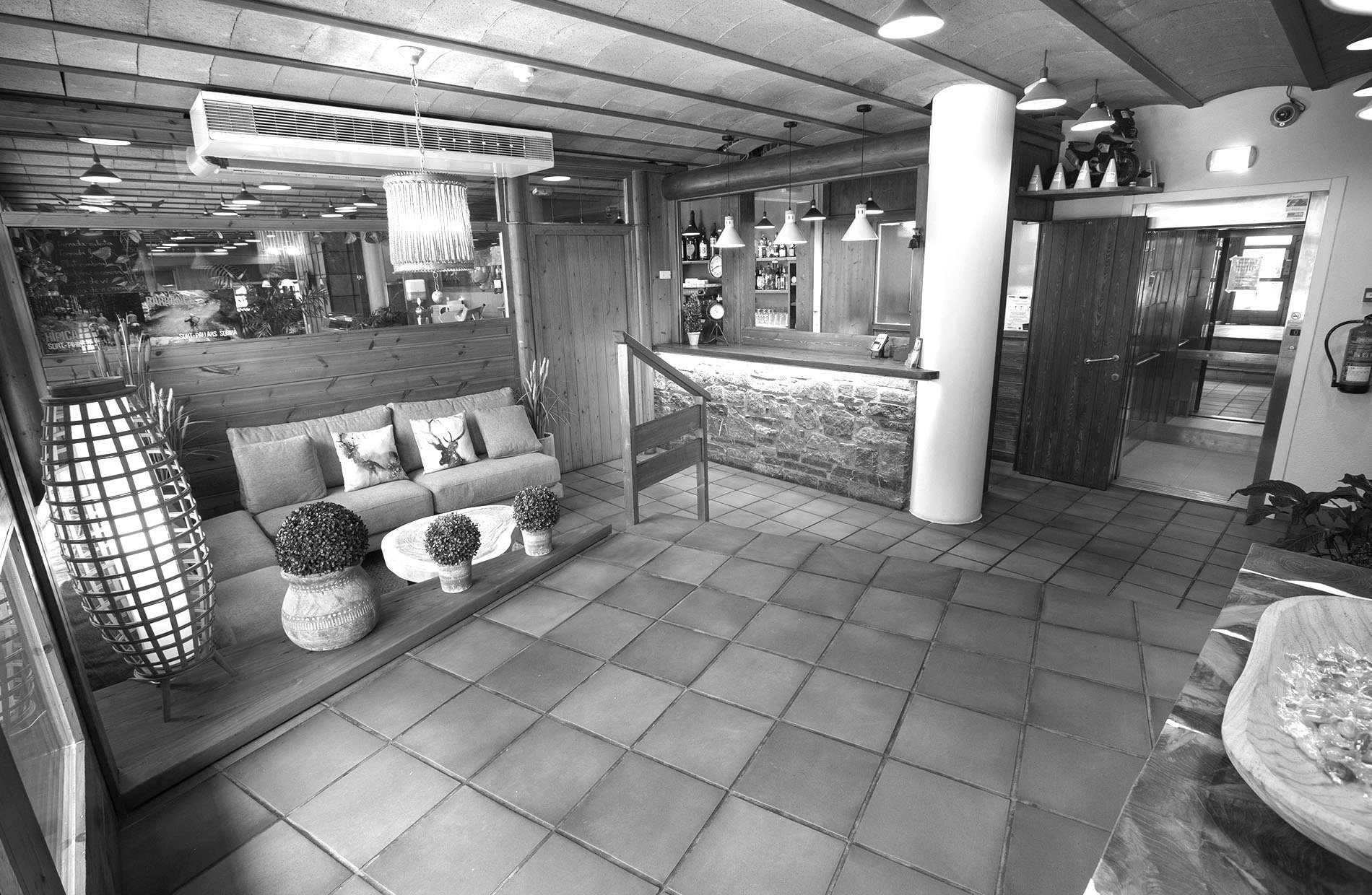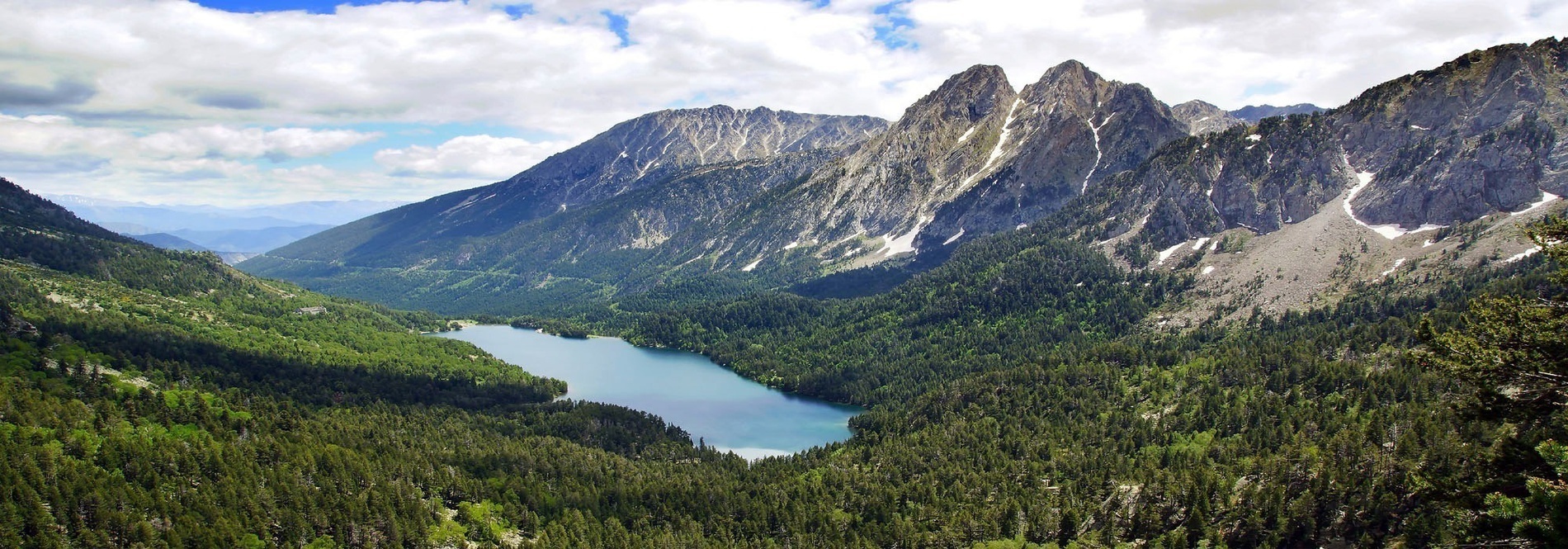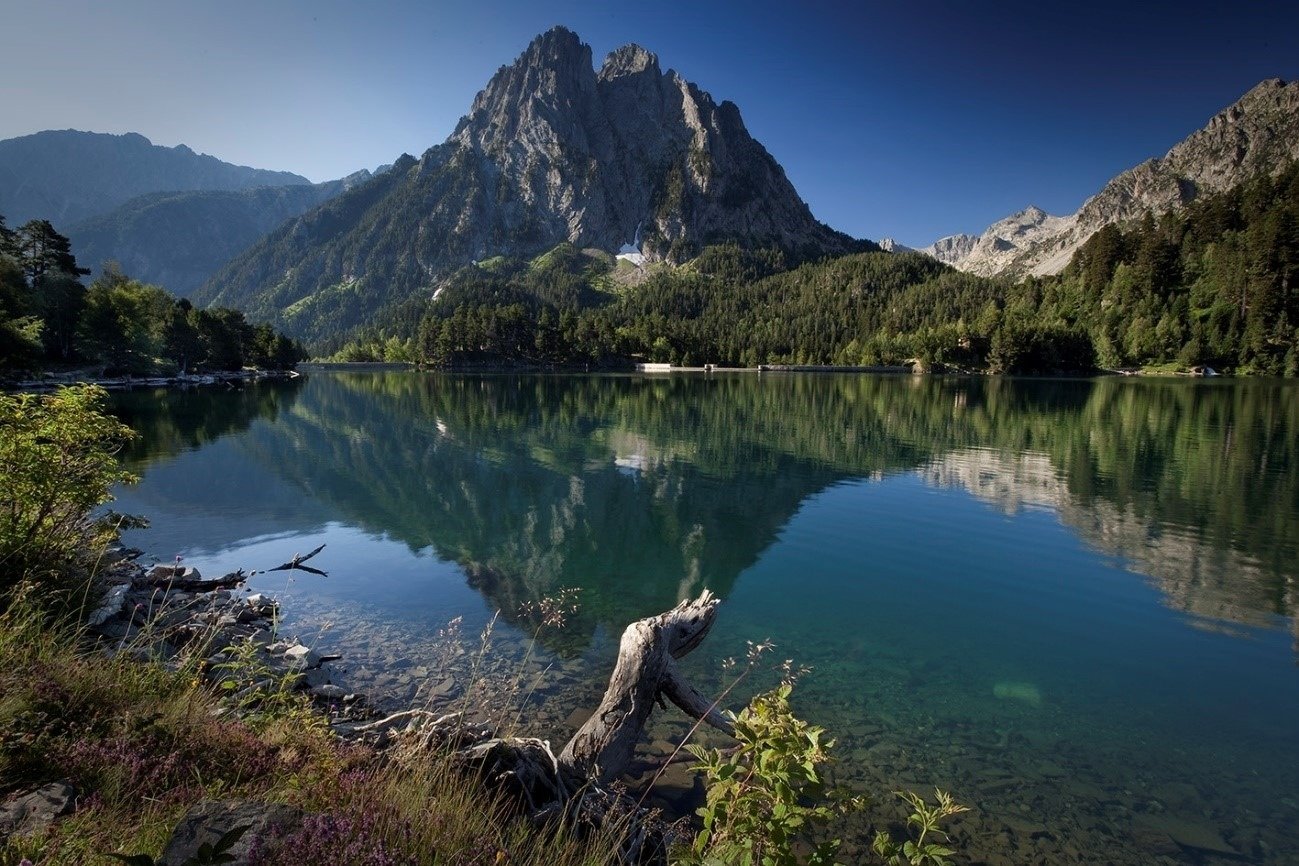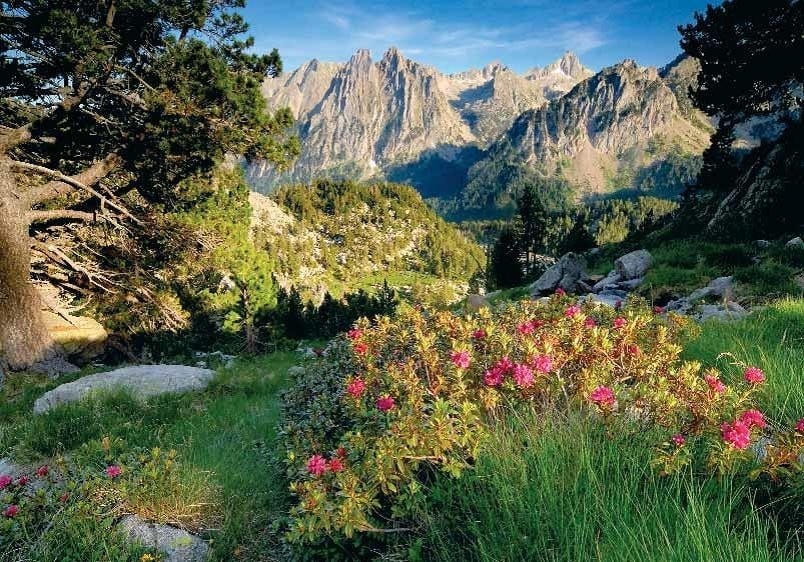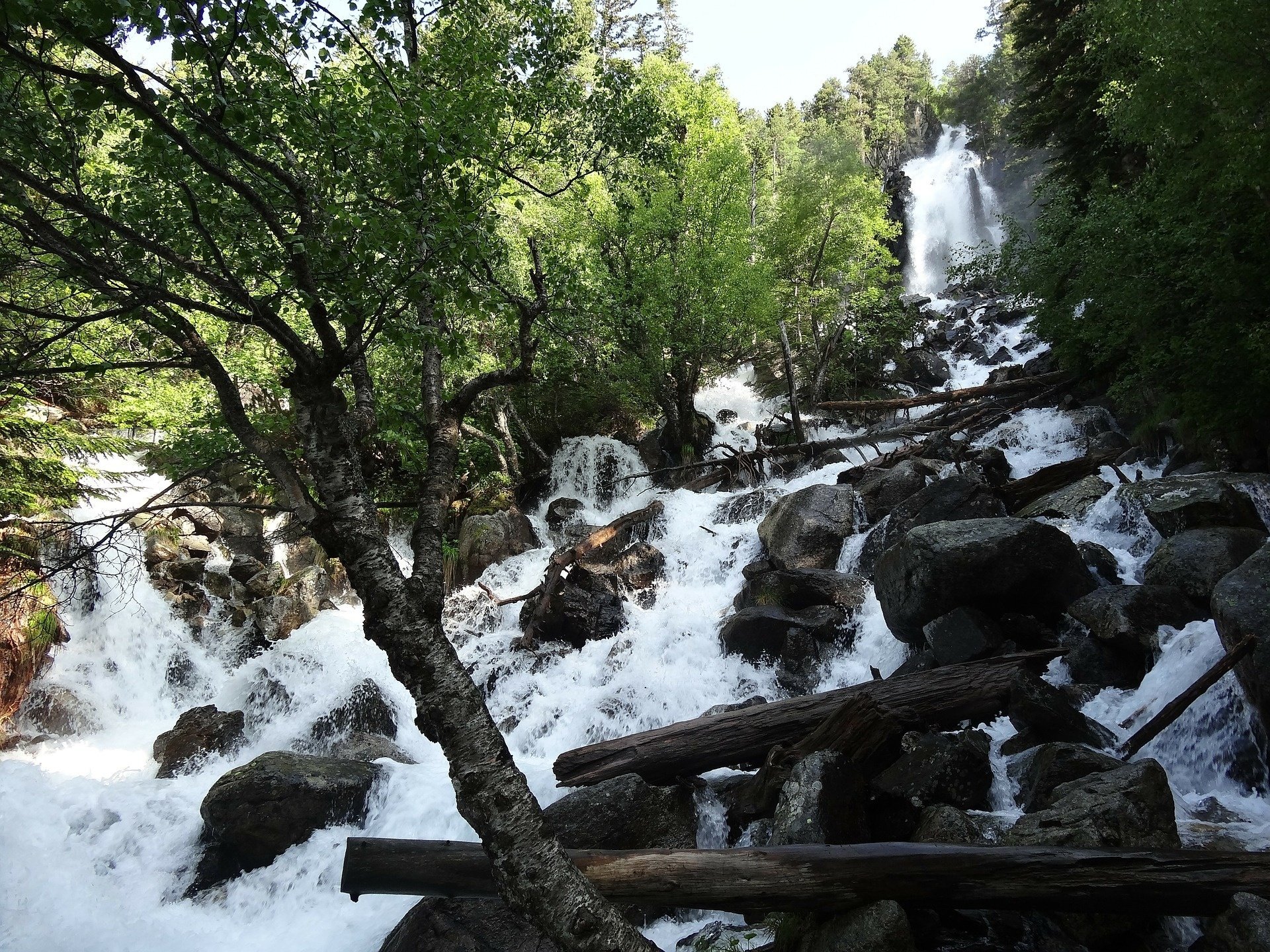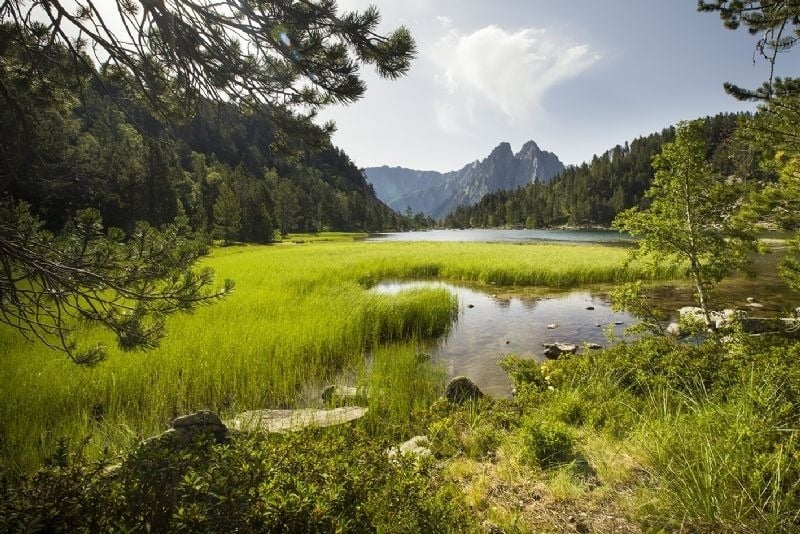We explain a route suitable for many people and very spectacular.
Sant Maurici and Els Encantats lakes
This is the most famous lake in Aigüestortes (in fact, it gives it its name) and one of the easiest to access. Taxis drop people off and pick them up at the information booth next to the lake. The area around the lake can even be crossed in a wheelchair by means of an 80-metre footbridge. From this lake, which is more than 1,000 metres long, our route starts towards the "Agulles d'Amitges", located 1h 45′ away on foot. Those who want to get to know the area without making too much effort, however, will find several intermediate goals that may be sufficient for an introduction to the park. Apart from the lake, the big attraction in this area are the two peaks called "Els Encantats", over 2,700 m high. The best view of these two peaks and the gap that separates them is, however, from other points along the route. In the second photo you can see Ratera Lake and, in the background, Els Encantats.
Ratera waterfall
30 minutes from Sant Maurici lake is the beautiful Ratera waterfall, which winds its way down the mountain in a 100-metre drop. From this area you already have a good view of the lake and "Els Encantats", so for the less demanding or for those who cannot afford to go further for other reasons, this can be the end of a short excursion. The path to it and the connections with other itineraries are well signposted at all times, as is usual throughout the park.
Ratera Lake
The route continues along the beautiful Ratera Lake, which is reached after a relatively easy climb in about 20/30 minutes from the waterfall. Once past the lake, those who are not in good shape have two alternatives: return along the same path or turn off on a path on the left towards the Mirador de l'Estany de Sant Maurici, located 1 km from the lake. If it had been up to me, I would probably have opted for one of these two plans, but my expedition companions were more upbeat, so we continued ascending along a "moderate" section towards the next checkpoint. Before starting the ascent, however, keep a close eye on the mountain, as this is an area where you might encounter marmots. We saw some of them running in the distance... I think.
Amitges Hut
After a tiring climb of about 45 minutes, you reach the Refugi d'Amitges, located at an altitude of 2,380 metres. In its bar-restaurant you can recharge your batteries, although don't expect popular prices (which is understandable, on the other hand). If you are thinking of doing a longer route, you can spend the night there for around €17. For amateur hikers like us, getting to the refuge seems like a feat on a par with climbing Everest, so it's a little annoying to see that some people get there in 4×4 taxis. Be that as it may, the views over the valley are worth the effort.
Amitges lake and Agulles d'Amitges
A few steps from the refuge is the Estany d'Amitges, the end point of the route "Cap a les Agulles d'Amitges". The name of this route comes from the two needles (agulles in Catalan) that protrude behind the lake. The so-called "Agulla Gran d'Amitges" rises to 2,662m. After enjoying the panoramic view, you can continue on to two other nearby lakes, Munyidera Lake and Barbs Lake, either along the central path or skirting the rocks of Amitges Lake. After exploring the area well, the question of the return journey arose. My companions, once again, decided to extend the route, so instead of going all the way back, we returned to the ascent to the refuge, where we connected with a 1 km path that led to the Obagues de Ratera lake.
Obagues de Ratera Lake
Although it is not part of the "official" itinerary, I must admit that it was a good idea to walk there, as it is perhaps the most photogenic lake in the group and the path allows you to enjoy it from a distance as you descend towards it. We took the opportunity to dip our feet in one of the streams that feeds it and eat some food. It is worth remembering, by the way, that it is forbidden to bathe in the whole park. And, obviously, you must not leave any kind of waste or other marks of your passage through the park.
L'Estany viewpoint
Our path continues another 800 m. in a comfortable descent along the river to the Mirador de l'Estany viewpoint (the one we had left out on the way up). From this point there are, as is obvious, unbeatable views over the Estany de Sant Maurici and Els Encantats. The return to the starting point can be done by retracing the path to Ratera Lake or by joining up with the "El Mirador de l'Estany de Sant Maurici" route, which consists of going around the lake. Of course, my companions chose, once again, the longer route, so we continued crossing the Pico del Portarró ravine to finally find the path back to the Estany de Sant Maurici. This last stretch (perhaps due to tiredness) did not seem to me to be the most spectacular, but it was the best way to finish off a great route through Aigüestortes.
TECHNICAL DETAILS AND ADDITIONAL INFORMATION
- Route: "Towards the Agulles d'Amitges" + "El Mirador de l'Estany de Sant Maurici".
- Type: on foot, circular route.
- Total distance: 12,32km (circular, linking the 2 routes)
Only route "Towards the Agulles d'Amitges": 9,16km (round trip)
Only route "El mirador de l'Estany de Sant Maurici": 8,8km (circular)
- Total duration: 5h 15′ (+ breaks)
- Difficulty: moderate (Areas with quite steep ascents from Ratera Lake to the Amitges Refuge. Several very stony areas along the route).
- Minimum/maximum altitude: 1909 m. - 2377 m.
- Difference in altitude: 459 m.
- Recommended season: June - October
- Starting point: ideally from the Estany de Sant Maurici, where there is a 4×4 taxi rank. If you leave your car at the Prat de Pierró car park and decide to start walking from there, you will have to add about 50 minutes each way.
